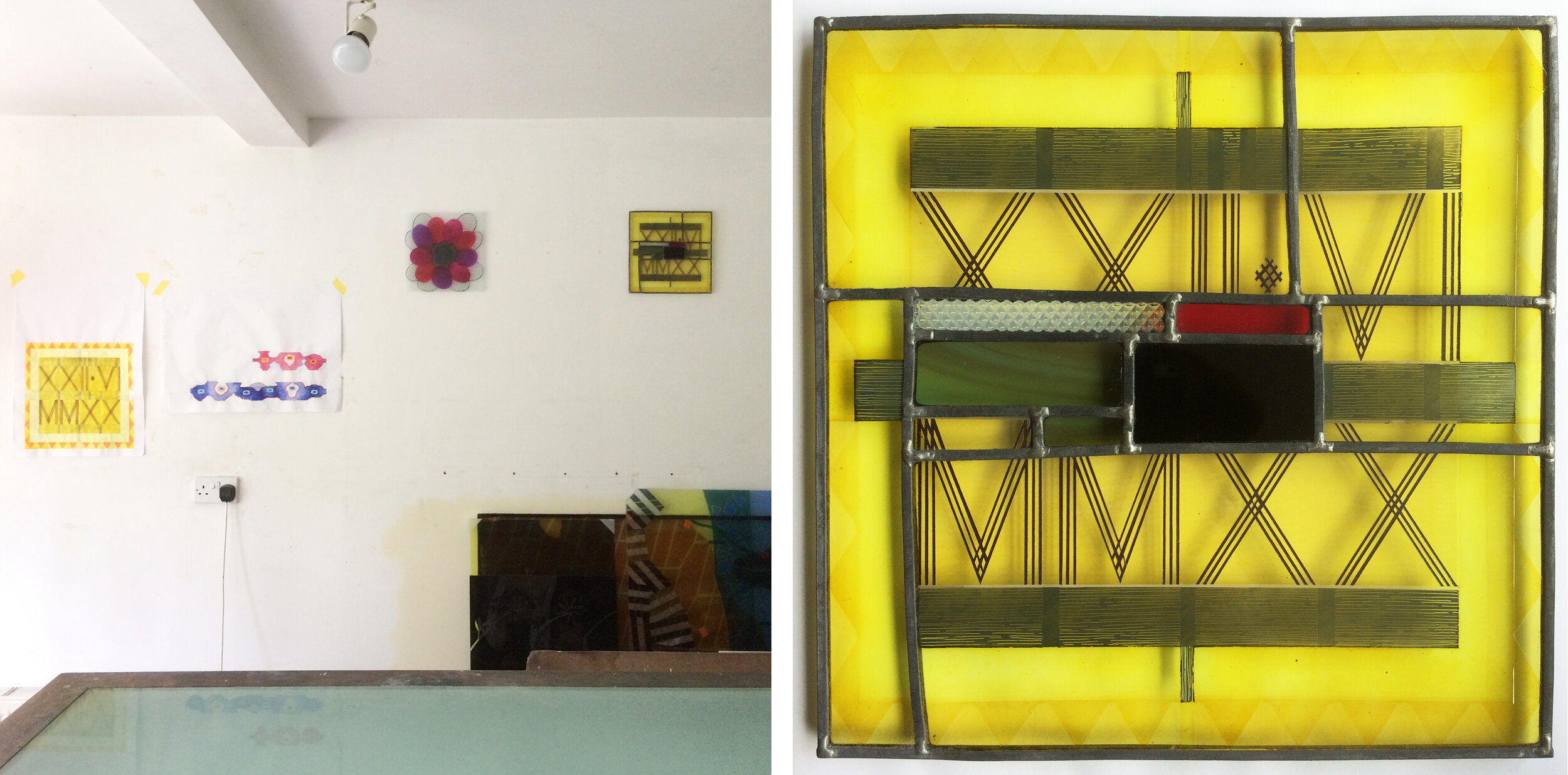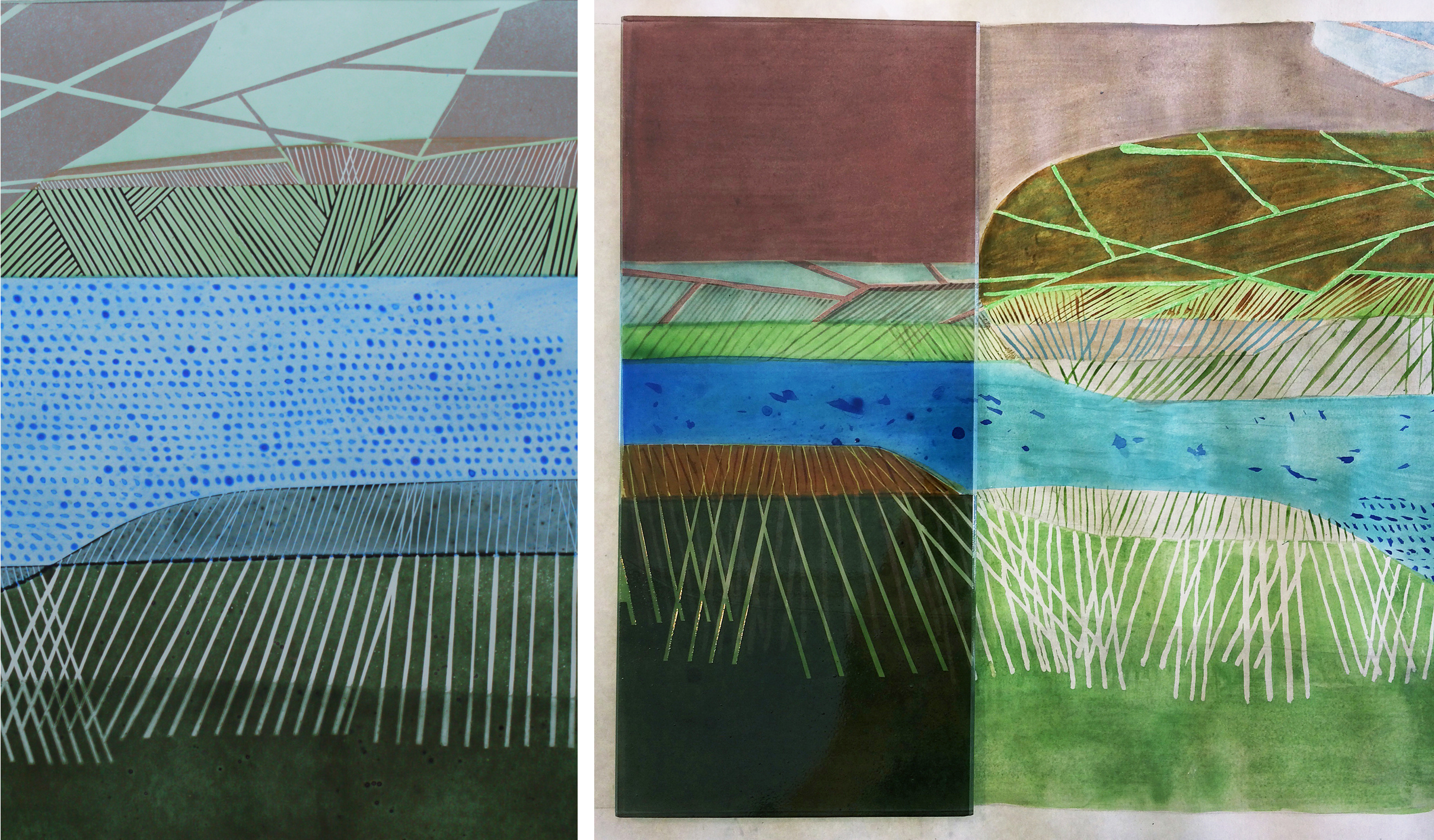Combination Trees 350 x 350 mm.
As you can probably tell, I made the panel above by leading together glass pieces from two different styles of work, both based on trees. I happened to have the two painted pieces of glass shown below in a pile on my work bench and had a feeling they would go together well. The finished panel also uses other pieces of glass from the same two series as I fitted the two patterns together in the best and most treelike way.
Tree patterns, left from the Theme and Variations series 2020, right sample from front door window 2023.
The original background tree pattern, the tops of four windows for a private house, 2018.
The coloured tree pattern is one I invented to show a woodland scene (I don’t think I stole it from anywhere) for a commission that I never got a great photo of, the one above was taken in my studio window before installing it. I then made a series of panels that were deliberately a cross between a design and a colour sample (below). Three years later I made the black and white trees pieces as samples for a front door commission where I tried out different blacks and greys as well as different methods for making the foliage patterns.
Theme and variations 2020
Some of the samples for a black and white front door commission 2023.
With my leftover pieces I made a second and opposite combination panel (below) where the coloured pieces float across the black and white sample like patches of light in a woodland scene. I’m able to chop these pieces up into complex shapes and then lead them together because it is the right type of glass - i.e. 2 to 4 mm thick whereas most of my work from the past thirty or so years has been made of glass at least 6mm thick and often toughened or laminated, as are many of my samples. These are not commissioned pieces and it’s a wonderful novelty for me not to have to get a beautifully drawn design agreed by a client before starting the making stage. The downside of this spontaneous way of working is that I don’t see mistakes (in the design) until the glass is cut, leaded and soldered so I have to pull the panel apart and change things, aiming for the sort of perfection that happens very occasionally.
The Opposite Combination 375 x 360 mm.





















